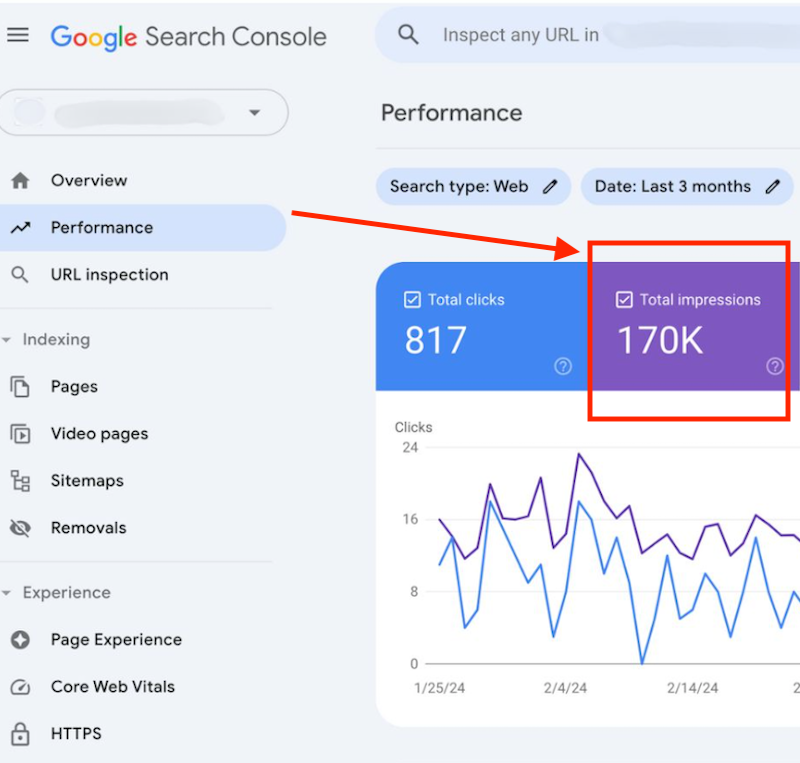Hyperlocal social media marketing is a potent strategy that focuses on connecting businesses to their immediate geographic surroundings. Rather than casting a wide net, this approach promotes products or services to an audience within a specific locality. There’s no super secret formula to implementing it either.
In this article
- Understanding Hyperlocal Social Media Marketing
- Benefits & Challenges of Hyperlocal Social Media Marketing
- Which Platform Is Best For Hyperlocal Social Media Marketing?
- Hyperlocal vs. Local Social Media Marketing
- What Types of Businesses Thrive with Hyperlocal Social Media Marketing?
Understanding Hyperlocal Social Media Marketing
What sets hyperlocal social media marketing apart is its geographical focus, driven by customized content and messages, fine-tuned to resonate with the community’s interests. The strategy may entail:
- Spotlighting nearby events
- Showcasing prominent local landmarks
- Promoting neighboring businesses
- Displaying products or offerings that cater uniquely to the local populace
Benefits of Hyperlocal Social Media Marketing
Adopting a hyperlocal approach offers myriad advantages.
- Building Community Bonds: By emphasizing local establishments, attractions, or events, businesses can foster trust, anchoring themselves as integral community members. This often leads to forming synergistic relationships with other local enterprises, opening the door to fruitful partnerships.
- Elevated Engagement: Directly addressing the community leads to heightened interaction, cultivating customer trust and loyalty, subsequently paving the way for sales boosts.
- Optimized Conversion: By zoning in on a particular geographic segment, content becomes more relevant, attracting an audience more inclined towards the offerings, resulting in elevated conversion rates.
- Cost Efficiency: Implementing hyperlocal tactics like targeted audience outreach, utilizing local hashtags, establishing a strong referral network, and harnessing user-driven content can substantially reduce advertising expenses.
Challenges to Hyperlocal Social Media Marketing
While the potential of hyperlocal marketing is undeniable, challenges do arise. These encompass:
- A capped outreach due to the localized focus
- The intricacies of precise audience targeting
- Potential resource constraints, especially for smaller enterprises
- The hurdles of competition within saturated markets
- Keeping pace with ever-evolving social media algorithms
Strategizing Hyperlocal Marketing
For optimal results in hyperlocal marketing through social media, a few pivotal strategies come into play:
- Pinpointing the audience and gauging their interests
- Acquiring comprehensive knowledge about the local marketplace and its competitors
- Designing content that resonates with the community
- Harnessing the power of localized hashtags and geotags
- Collaborating with area influencers and businesses
- Providing swift responses to customer feedback and questions
- Ensuring regular and consistent content updates
Which Platform Is Best For Hyperlocal Social Media Marketing?
Selecting an apt platform is vital for hyperlocal marketing success. Some of the leading contenders include companies you are already familiar with:
- Facebook: A mammoth user base, complemented by its community features like local groups and tailored targeting, makes Facebook an indispensable tool for local outreach.
- Instagram: With its inherent visual appeal, Instagram becomes a showcase hub for businesses, especially those in visually-driven industries. Features like Stories, Reels, and location tags further enhance its local marketing capabilities.
- Twitter: Twitter shines due to its instantaneous nature and broad user base, enhanced with hashtag utilization and a robust advertising suite.
- LinkedIn: Tailored for professionals, LinkedIn aids businesses in connecting with other local companies and professionals, fostering deeper relationships through its community facets.
Hyperlocal vs. Local Social Media Marketing
Both hyperlocal and local social media marketing strategies aim to target and engage audiences based on geographic parameters. However, the scale, specificity, and the nature of the content differ. Here’s a breakdown of their distinctions:
1. Scale and Specificity
- Hyperlocal: This approach narrows its focus to a particular area, often as limited as a single neighborhood, street, or block. Think of it as marketing tailored for a singular part of a city or even a specific community within a town.
- Local: Local marketing has a broader scope, targeting a whole city or a larger region. For instance, a business might market its services to all residents of Miami rather than just those in the Little Havana district.
2. Content Relevance
- Hyperlocal: The content is highly customized and resonates with immediate surroundings or events. For instance, a coffee shop might promote a discount during a nearby community festival.
- Local: Content would be more generalized to cater to the entire city or region. The same coffee shop might advertise a seasonal drink available to all city residents.
3. Objective
- Hyperlocal: Often, the aim is to attract foot traffic from the immediate vicinity, build deep community ties, and address the very niche needs or interests of that specific area.
- Local: The goal is typically broader, aiming to raise awareness, engagement, or sales across a larger geographic area.
4. Examples of Tactics
- Hyperlocal: Using geotags for a specific neighborhood in Instagram posts, collaborating with neighborhood influencers, or sponsoring a local block party.
- Local: Running Facebook ads targeting users in an entire city, collaborating with city-wide influencers, or sponsoring city festivals.
5. Resource Allocation
- Hyperlocal: Given the targeted nature, businesses might have a smaller budget but highly tailored efforts, ensuring every penny spent has a high chance of reaching an engaged audience.
- Local: With a broader scope, the budget might be more prominent, but so is the audience pool, potentially requiring more generalized messages.
In essence, while both hyperlocal and local social media marketing strategies target based on geography, hyperlocal is much more granular, focusing on a very specific locale. In contrast, local marketing encompasses a larger area, aiming for a more expansive reach within a city or region. You might deploy each strategy at different stages of growth or focus on one entirely.
What Types of Businesses Thrive with Hyperlocal Social Media Marketing?
Hyperlocal marketing through social media offers a laser-focused approach, emphasizing a specific community or geographical area. Certain businesses, due to the nature of their services, products, or audience, can particularly benefit from this strategy:
- Local Restaurants and Cafés: With ever-changing specials, events, or neighborhood promotions, eateries can engage their immediate community, enticing locals to try out their offerings or return for favorites.
- Brick-and-Mortar Retail Stores: Whether it’s a boutique, a bookstore, or a local grocery, hyperlocal marketing can draw foot traffic from the surrounding neighborhoods, especially during sales or special events.
- Service Providers: Local salons, barbershops, dry cleaners, and spas can inform residents about discounts, new services, or timely offerings using hyperlocal strategies. Even digital service providers like local Managed IT Service providers that also aim to have an engaging presence with their community.
- Real Estate Agents: Realtors can use hyperlocal marketing to highlight properties in specific neighborhoods or communities, providing insights into local amenities, events, or changes that might impact property values.
- Local Events and Festivals: Organizers can use hyperlocal marketing to target residents in the immediate vicinity, ensuring those most likely to attend are well-informed.
- Fitness Centers and Yoga Studios: They can attract community members looking for local solutions to their fitness needs, promote classes, or introduce new trainers.
- Farmers’ Markets: Such markets can target the local community to inform them about market days, featured local produce, or special vendor appearances.
- Local Artisans and Craftsmen: Those who produce unique, localized products or art can draw attention from their immediate community, building a loyal clientele.
- Medical Offices and Dentists: Healthcare providers can inform local residents about services, promotions, or health days. For example, a dentist might run a hyperlocal campaign on a teeth cleaning special.
- Tutoring and Educational Services: Such services, focusing on after-school programs or test prep, can target local parents and students, ensuring they’re aware of available resources in their immediate vicinity.
- Pet Services: Local pet groomers, sitters, or vet clinics can use hyperlocal marketing to reach pet owners in the surrounding areas, promoting their offerings and special deals.
Businesses with a localized customer base rely on foot traffic, offer services pertinent to the community’s daily needs, or provide unique localized experiences stand to gain significantly from the hyperlocal approach. This strategy allows them to communicate more directly, personally, and timely with their most relevant audience: the local community.
Creating Your Hyperlocal Marketing Presence
Before diving into your business’s hyperlocal social media marketing plan, it helps to have an existing presence in your local online digital community. Establish local citations so that your business can be easily found. If you are heavily promoting your business locally, but people can’t find out about it online or associate it with the location, your efforts won’t produce what they otherwise could. Moreover, it also helps to be active and genuinely participate in local online forums that digitally house discussions from members of your community.
Facing the Hyperlocal Social Media Marketing Challenges Head-On
Embracing hyperlocal social media marketing can propel businesses towards profound community integration and enhanced sales.
For a new business, hyperlocal marketing is something you can tackle on your own, but if you’ve tried and it’s occupying too much time, contact us today. Ask us how we’ve helped boost clients’ hyperlocal social media marketing presence.








